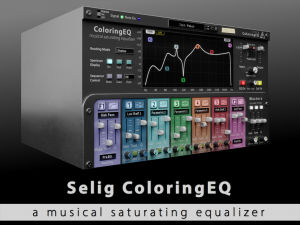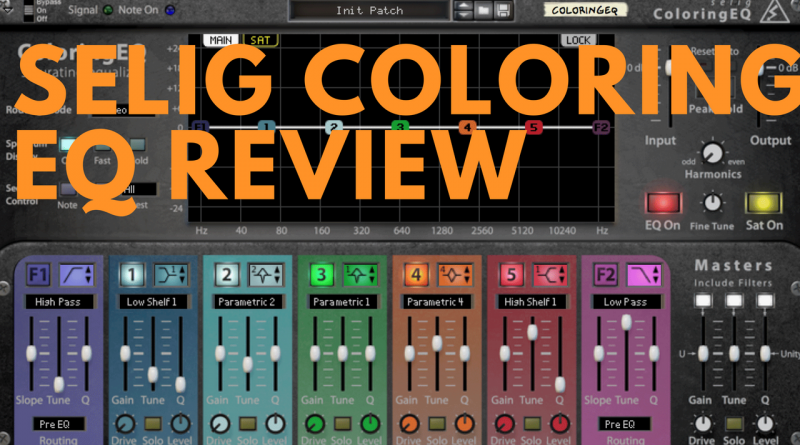Review (with video): Selig ColoringEQ
 Selig ColoringEQ
Selig ColoringEQ
Formats: RE
Price: $99
Selig Audio have really outdone themselves this time with the new Selig ColoringEQ Reason rack extension. In a nutshell, this nifty device includes multiple innovative features in a rack extension format, while also handily offering the tools you need in your everyday workhorse EQ.
Let’s begin by talking about just what the Selig ColoringEQ is: an EQ with the ability to control 5 bands independently with a HUGE variety of EQ curve shapes. It also includes two filters that can do high passing, low passing, band passing, comb filtering and more. So that’s all pretty good.
But where it really shines is the ability to add saturation directly to each band without having it affect other bands. So imagine you’ve got a drum loop, and you just want to make the snare a little crunchier. Well, just locate the snare frequency and load it up with saturation. Boom.
 There’s also the ability to sweep the saturation between odd and even harmonics, which can add subtle, but absolutely essential color to your mixes.
There’s also the ability to sweep the saturation between odd and even harmonics, which can add subtle, but absolutely essential color to your mixes.
This is also a great way of taming more abrasive frequencies. It’s also great for increasing your headroom. Often, adding harmonic complexity through saturation will allow a sound to remain audible despite being lowered by a fair amount. It will still be apparent in the mix, but won’t conflict as much with other instruments, by displacing some of its harmonic content outside of the busiest range.
So that’s all good. But there’s way more under the hood. The ColoringEQ also includes a powerful spectograph with a “hold” function, so you can freeze an EQ curve in place (great for referencing tracks). The right side also seems to incorporate a lot of the functionality of the Selig Gain Rack Extension, with peak hold and some good volume monitoring features.
Another fantastic feature of the ColoringEQ is the ability to map filters to your keyboard/midi. So imagine you’ve got an 808 style bass booming along. I always struggle to mix an 808 with other low end content, like pads, horns, and keys. But now, I can load a ColoringEQ on my channel with the pads, duplicate the midi data from the 808 channel, and basically have the ColoringEQ selectively duck the fundamental frequency of the pad channel without significantly diminishing the overall timbre of the instrument.
Very cool.
Selig was also kind enough to provide lots of very usable presets (though, in general, EQ presets tend to be the least useful since every sound behaves a little different, and every instrument really needs to be weighed against what else is in the mix). One of the coolest features are reproductions of the EQ curves of classics like Neves, Pultecs, and SSLs. These aren’t emulations, but they do their EQ work in the same way, I believe.
Overall, the ColoringEQ is a great go-to EQ, and it has the ability to do some very unique, powerful things. It’s definitely worth checking out!
Correction: At 4:21, I say “low frequencies and high frequencies” as opposed to “odd and even harmonics.”
Evan has been using Reason since version 2.5. His Youtube Channel, Stock Music Musician, is devoted to Reason and full of useful how-to guides. You can download his free Selig ColoringEQ patches here.

